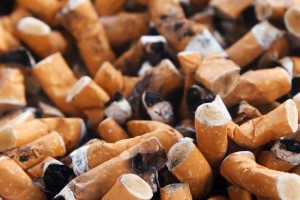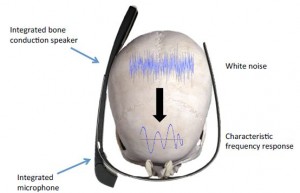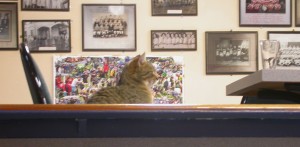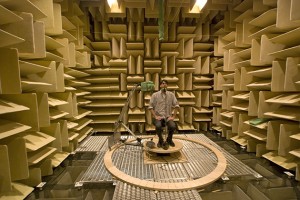Engineers at PCB have published an interesting article at audioxpress.com on how microphones are calibrated.
Sound absorbing material from cigarette butts
I can see this recent article as a contender for an Ig Nobel prize
“Acoustical performance of samples prepared with cigarette butts”
Spanish researchers from Departamento de Física Aplicada, Escuela Politécnica, Universidad de Extremadura, measured the sound absorbing properties of cigarette butts. Given the enormous number of cigarette butts that get thrown away, which don’t decompose very well, it is great that someone tried to find a use for waste.
Use your skull’s vibration for authentication
Researchers from the University of Stuttgart, Saarland University, and Max Planck Institute for Informatics have shown that it is possible to use a skull’s unique response to vibration for authentication. The researchers vibrated a skull with white noise and measured the response. They were able to correctly identify users 97% of the time.
See the full paper here.
Why so many modern pop songs sound alike
You’ve probably thought that numerous pop songs sound similar to each other. An article on Public Radio International explains that is a fairly accurate deduction. The old-school way involved lyric and song writer sitting down together and composing a song. Now it is done in a production line and out-sourcing method.
Read the full article on pri.org.
Rossing Prize in Acoustics Education Awarded to Prof Yang-Hann Kim
Professor Yang-Hann Kim, from the Korea Advanced Institute of Science and Technology in Daejeon, has been awarded the 2015 Acoustical Society of America Rossing Prize in Acoustics Education.
The Rossing Prize is awarded to an individual who has made significant contributions toward furthering acoustics education through distinguished teaching, creation of educational materials, textbook writing and other activities. The Prize will be presented at the 170th meeting of the ASA on 4 November 2015 in Jacksonville, Florida.
Brüel & Kjær and Altair Partner Alliance
The Altair company, which makes the software Hyperworks and formed the Altair Partner Alliance, announced that Brüel & Kjær, one of the oldest sound and vibration instrumentation companies, is bringing its noise, vibration and harshness (NVH) software, Insight+, to HyperWorks customers. The Insight+ software enables designers to listen to the sound a vehicle would make from a virtual design.
Read the press releases on the Altair and the Bruel and Kjaer web sites.
Sound of crinkling tin foil can cause seizures in cats
An article published in the Journal of Feline Medicine and Surgery by researchers from the University College London and Davies Veterinary Specialists describes a new condition called feline audiogenic reflex seizures (FARS) that seizures can occur in some elderly cats when they are exposed to certain sounds such as crinkling tin foil and striking a metal spoon on a ceramic feeding bowl.
Read the full article reported in The Telegraph.
Helicopter noise complaint web site opens in LA
The Federal Aviation Authority has started a helicopter noise complaint system in the Los Angeles county area called the Automated Complaint System (this sounds like a spambot!). The monitoring system uses the WebTrak site that Bruel and Kjaer bought a few years ago.
The WebTrak system combines GPS data from aircraft movements with noise levels from monitoring stations. Historical data of flight paths and noise levels can be inspected using a web browser.
Atlanta Falcons fined $350,000 for playing fake crowd noise
The NFL team Atlanta Falcons were fined $350,000 for playing artificial crowd noise into the Georgia stadium.
Read the article on the NFL.com web site.
Distortion important for determining distance of noise source
Researchers at University of Connecticut Health Center, the University of Rochester, and University of Louisville have published a paper in the Journal of Neuroscience, investigating the ability of a rabbits to determine the distance of a noise source depends on the modulation of the sound. The researchers inserted tiny microphones inside rabbits’ ears to record the sounds played at several locations. They used these recordings to simulate modulated or unmodulated noise coming from different distances away from the rabbit. Then they played the simulated sounds back to the rabbit, and measured the responses of neurons in the rabbit’s inferior colliculus (IC), a region of the midbrain known to be important for sound perception. When the rabbit heard the simulated sounds, certain types of IC neurons fired more when the sound was closer and the depth of modulation was higher – that is, when there was a bigger difference between the sound’s maximum and minimum amplitude. The neurons fired less when the sound source was further away.
Read the full article on the UConn Today web site.








